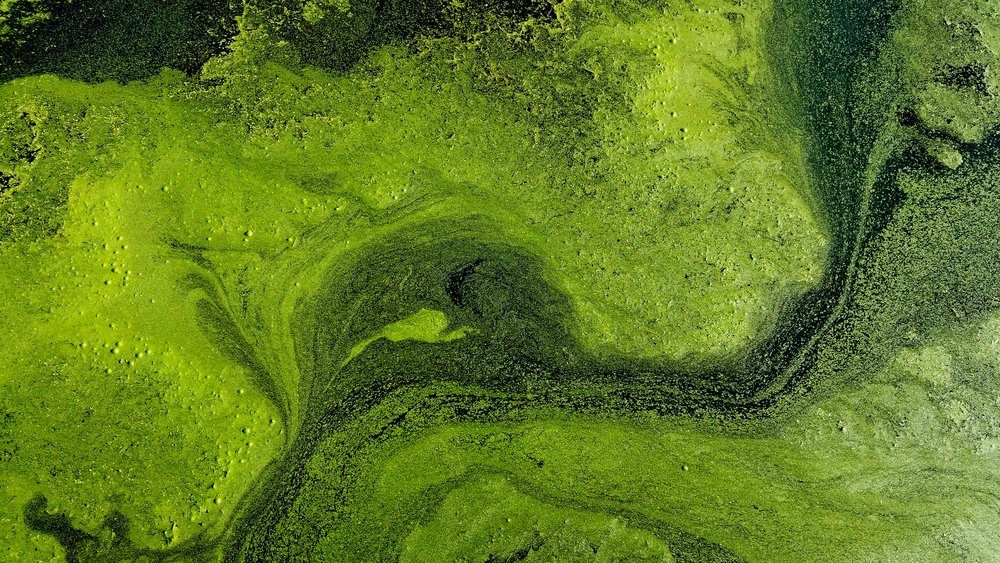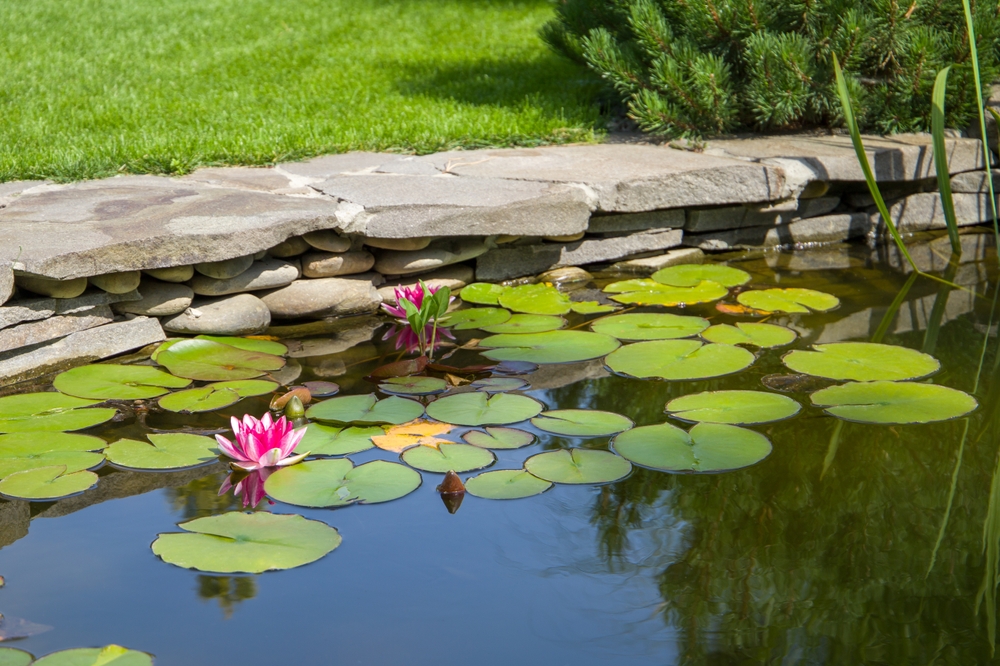By Dr David Pool
Throughout the summer your pond should be at its best with healthy plants and fish and clear water. However, there are a few summer problems which can occur which are related to the increased activity of both plants and fish. Luckily, these are relatively easy to control or better still, prevent.
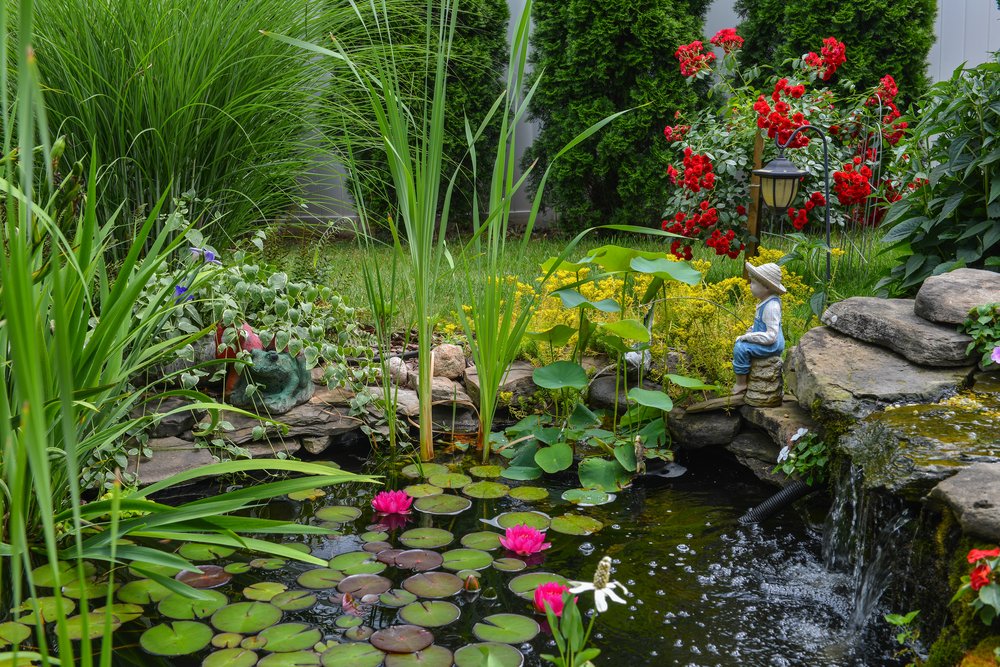

Oxygen
As summer welcomes higher water temperatures, the major water quality problem is due to a lack of dissolved oxygen. This can result in the fish gasping at the water surface, showing rapid gill movements and congregating around filter and waterfall outflows. Such problems are usually confined to ponds in which there is little or no water movement and generally occur at night.
At higher temperatures, fish need more oxygen. Unfortunately, as the temperature rises, the water is not able to hold as much oxygen as it can when it is cold. Therefore, if there is no water movement to allow the oxygen to be absorbed across the surface, it can quickly be used up. Such problems do not usually occur during the day because the plants and algae in the pond will be photosynthesizing. That is taking in carbon dioxide and water and forming carbohydrates and oxygen. This oxygen release will ensure that there is sufficient oxygen in all but the most overcrowded pond throughout the day.
However, after dark, the plants and algae stop producing oxygen and instead use it to respire. This, in addition to the continuing oxygen consumption by the fish, filter bacteria and other pond inhabitants, can quickly lead to oxygen depletion. Keepers can avoid this by ensuring there is plenty of water movement, which will mix the surface water (that has higher concentrations of oxygen) with the low-oxygen bottom layers. Water movement can be achieved using a waterfall, fountain or pond air pump. Excess debris should be removed as it will use up a lot of oxygen. Also, take great care following algae treatment as any dead or dying algae cells will consume oxygen at a rapid rate.
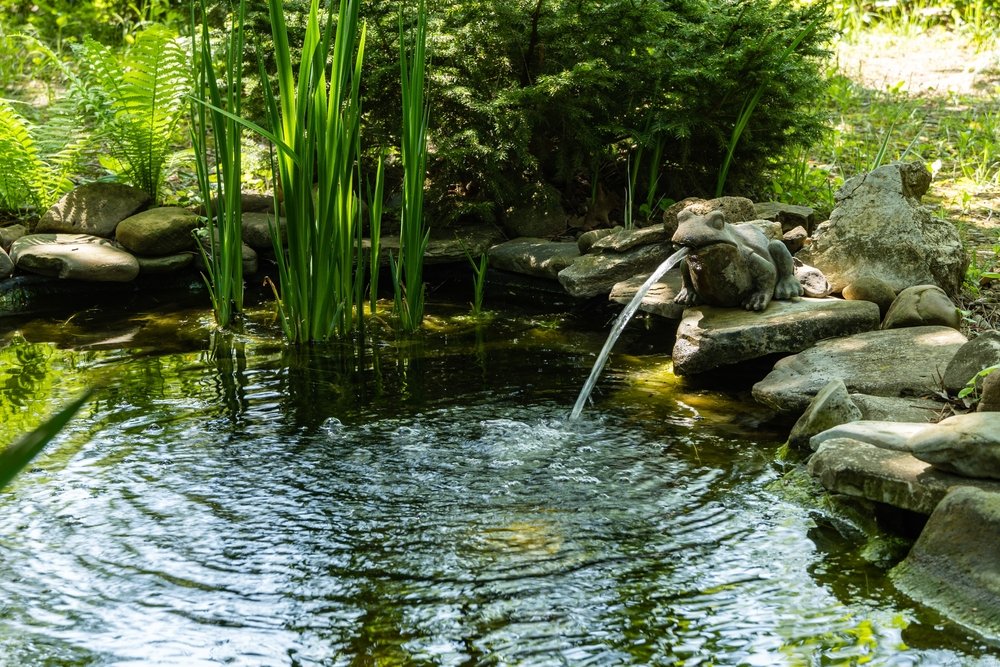
Pollutants
Organic waste such as uneaten food, fish waste and leaves are broken down in a process known as the nitrogen cycle. This decomposition results in the formation of ammonia, nitrite and finally, nitrate. Ammonia is very poisonous to fish and other wildlife. In water, ammonia can be present as either toxic ammonia or non-toxic ammonium, with the relative amounts of each being determined by several factors of which the most important are water temperature and pH. Below a pH of 8.0 most of the ammonia is present in the non-toxic ammonium form. Above 8.0 the toxic form becomes increasingly more prevalent. Regarding temperature, there is approximately 5 times as much toxic ammonia at 20°C as there is at 5°C. Whilst this is unlikely to cause a problem in a pond with a pH of 7.5 or less, it could do so in a poorly filtered or overcrowded pond with a pH of 8.0 or above.
Ammonia is an irritant, which will damage the sensitive gills of the fish as well as affecting the skin. Symptoms of ammonia poisoning include gasping at the water surface, gathering around areas of water flow and sulking on the bottom or surface of the pond – all resulting from the gill damage, which prevents the fish getting enough oxygen. You may also notice the fish rubbing against underwater objects as they try to get rid of the irritation. Most fish will also produce a layer of protective mucus over the body, causing them to feel very slimy and to appear paler than normal. In severe cases, the skin can become blood shot.
Raised levels of nitrite are a problem in all water temperatures and pH values. However, nitrite can be a particular problem at higher temperatures. Nitrite affects the fish by binding with the hemoglobin in the blood and preventing it from carrying as much oxygen as normal. If the water has low levels of oxygen due to the raised temperature and other factors already discussed, the effects of nitrite can be greatly exaggerated.
Careful monitoring of the water quality with a test kit will enable rapid detection of raised levels of ammonia or nitrite. Watching your fish and looking for signs of them behaving unusually is also a very good guide that something is wrong. Levels of ammonia or nitrite that are significantly above 0mg per litre of water would indicate a poorly functioning or too small filter, overcrowding, over feeding, the recent introduction of fish or having recently cleaned out the filter. Such problems can be overcome quickly by a large (25 – 50%) partial water change to dilute the polluted water. At the same time, remove any excess debris that has accumulated at the bottom of the pond and cut down on feeding until the fish are looking healthy again.
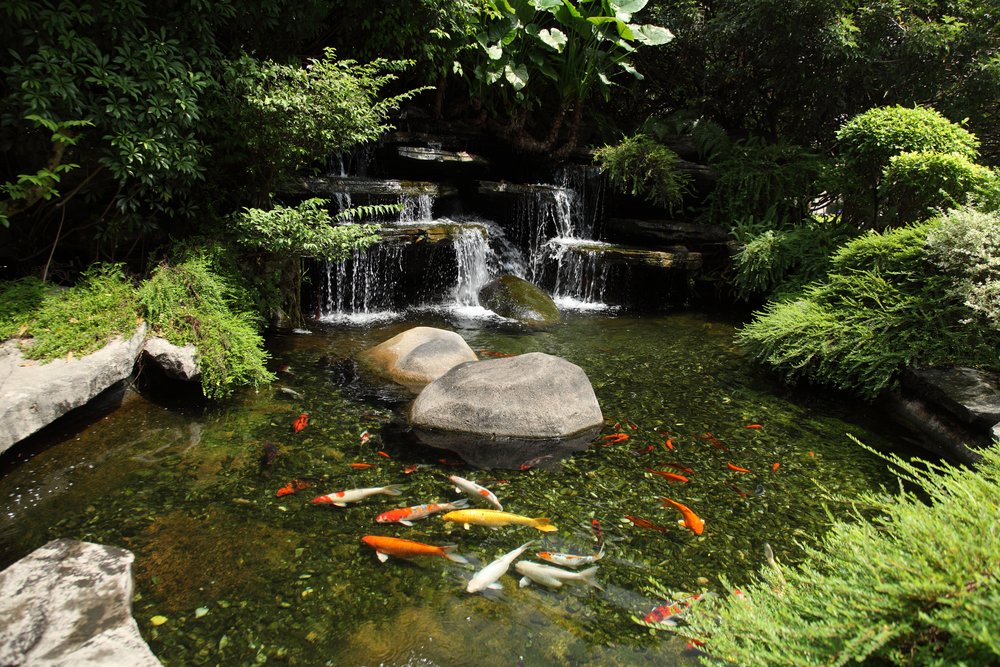
Holidays
Many pond owners are concerned about leaving their pond whilst they are away on holiday. In most cases, these worries are completely unfounded, and the pond will come to no harm at all whilst they are away. In a planted pond the fish will find plenty of algae and insect larvae on which they can feed and in many cases the pond will look a lot cleaner and clearer when you return. Even in a fish only pond, the fish can find some food and will have sufficient stored energy reserves to thrive for 1 – 2 weeks without additional feeding.
It is advisable not to add any new fish in the 2 – 3 weeks immediately before you go away on holiday. The last thing you want to do is to introduce new diseases into the pond just before you go away. Cleaning the filter and removing any excess debris about a week before you go away is a good idea and will ensure that the pond is in perfect condition. Don’t add any extra food to the pond in the week before you go as any that is uneaten will pollute the water.
As a precaution, it is wise to ask a friend or neighbour to have a look at the pond occasionally to check that there are no severe problems (e.g. dead fish, pump not working). You can ask this person to feed the fish, but unless they are a fishkeeper the amount to give at each feed should be carefully measured into an envelope. Most non-fishkeepers will be tempted to add too much food to the pond with the resultant water pollution issues.
Evaporation
The loss of pond water in the summer can be considerable, particularly if you have a fountain or waterfall. In very warm conditions the loss of water can be so great that it is confused with a leaking pond. Evaporation losses should be replaced on a regular basis with tap water that has been treated to remove harmful chlorine.
Fountains
Many garden ponds have ornamental fountains that are run continually. In windy weather, the water from the fountain can be blown out of the pond resulting in water loss, and/or the resultant water washing debris back into the pond. It is therefore advisable to switch of the fountain during periods of windy weather or turn them down so water is not lost. If the fountain is part of the pump that provides water to the pond you shouldn’t turn off the pump – just turn down the fountain.
Fountains can have an adverse effect on water lilies. Water lilies don’t like water falling onto their leaves or flowers. If the water on the leaves evaporates in strong sunlight, it can burn the leaves resulting in brown areas that will decompose. Water falling in the flowers will usually result in the life span of that flower being greatly reduced, sometimes to just one day. Positioning water lilies away from fountains and other water movement is advisable (and watch out for the impact of the water blowing in strong winds).

Spawning
In the late spring and early summer, it is likely that the fish in a healthy pond will spawn. This does not cause any problems in most ponds. Sometimes the parent fish can damage themselves, with torn fins and grazes on their body. They will usually heal within a few days, but if not, use of a general external parasite treatment will help. After a successful spawning you will notice the parent fish swimming around and eating a lot of the eggs. If the pond is planted, there will be sufficient eggs that remain to ensure that you have fry in the pond. Watch out for water quality problems in the few days after spawning. Sometimes the production of large amounts of eggs can lead to slightly raised levels of ammonia ad nitrite.
Pond fish fry are initially an olive brown colour and can be difficult to see amongst the plants and algae. As they grow the colours may start to develop, with the brighter colours of their parents starting to develop after around 4 weeks. Identifying what fish fry you have can be a challenge, as they all look remarkably similar. Once the fish are about 2 – 3 cm in length you can get an indication by catching some of the fry and putting them in a clear polythene bag half filled with water – this allows you to look at the fish from the side. Look at the dorsal fin (on their back) and the presence or absence of barbels around the mouth.
A long dorsal fin and no barbels around their mouth – goldfish
A long dorsal fin and barbels around their mouth – koi
A short dorsal fin and no barbels around their mouth – orfe
A short, rounded dorsal fin and barbels around the mouth – tench
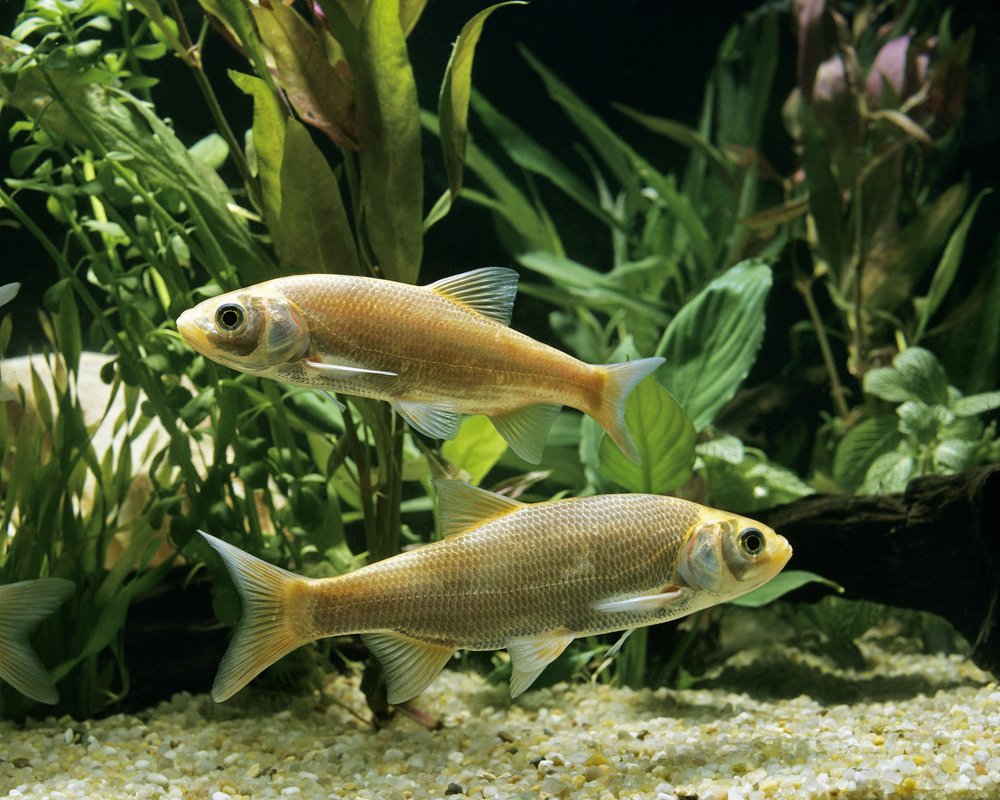
Algae Growth and Green Water
By far the biggest maintenance task and potential problem in the summer is the growth of unsightly algae in the pond. This takes the form of green water, which is millions of algae cells suspended in the pond water, or blanket weed, which is strands of filamentous algae which grow on plants and the pond side.
Algae grow in a pond because there is plenty of sunlight and nutrients in the water. In a well planted and lightly stocked pond there will be a balance throughout the summer where the nutrients produced by the fish are being absorbed by the plants, leaving no excess for the algae to grow on. Unfortunately, this balance is not there throughout the year or in all ponds.
Green water algae may be controlled using a UV clarifier. These units produce UV light which will kill the algae cells. Alternatively, you can use an algaecide, floculant or straw extract that will control the algae growth. These options can work very effectively, but you need to also get rid of the conditions that are encouraging the algae to grow so quickly if the problem is not to return. A UV clarifier, for example will effectively kill green water algae cells, but the light and nutrients remain and will often encourage the growth of blanket week.
Adding more fast-growing plants (oxygenating plants) is a good way to reduce the nutrients in the water. Regularly cut them back to ensure that they are growing actively. Removing excess debris from the pond bottom will also help to remove a source of nutrients. One of the biggest sources of nutrients in the pond is from the food that you feed to the fish. Using a good quality food will ensure that most of it is digested by the fish and doesn’t pass through them to encourage the algae growth. Even with a good quality food, make sure that you don’t overfeed. 1 – 2 times a day on as much as they will eat in 5 minutes is sufficient. Providing shade will also help to minimize green water algae. Lilies can be very effective at shading large parts of the pond. Tall marginal vegetation can also help, particularly if planted on the south side of the pond where it will provide the most shade.
The filamentous algae that we call “blanket weed” can be controlled using commercially available algaecides or straw extracts. It is advisable to remove as much of the algae as possible before treating, as this will avoid any dead material decomposing and polluting the water. As with green water, preventing the blanket weed from coming back using fast growing pants, minimizing nutrients into the pond and providing shade will help to prevent the problem returning.
